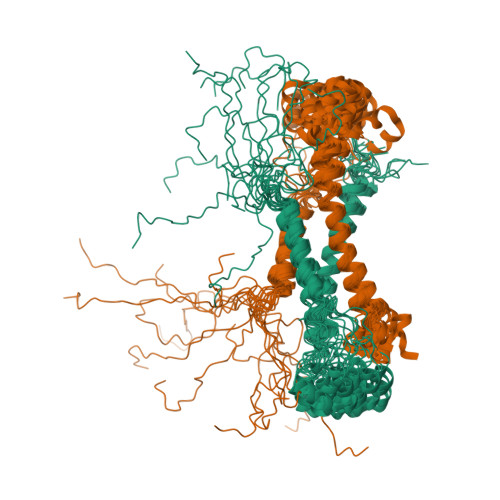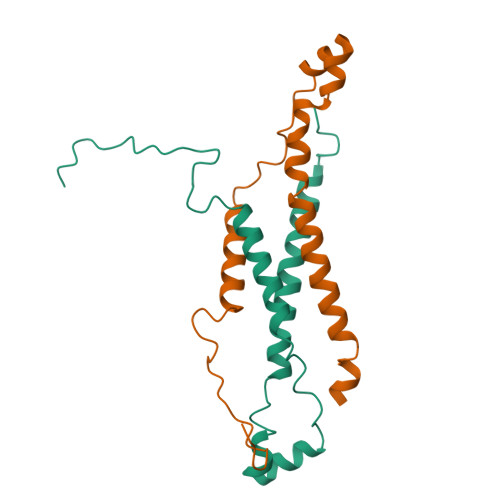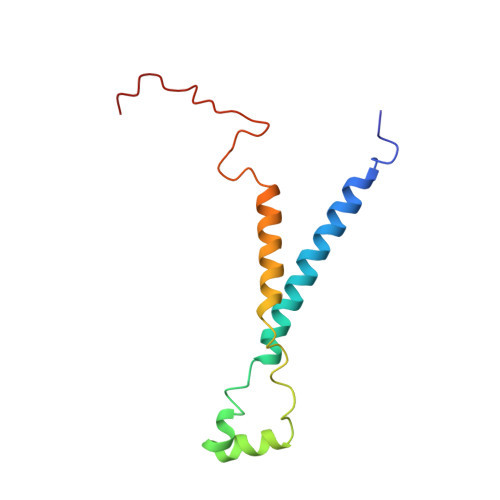Structural instability tuning as a regulatory mechanism in protein-protein interactions.
Chen, L., Balabanidou, V., Remeta, D.P., Minetti, C.A., Portaliou, A.G., Economou, A., Kalodimos, C.G.(2011) Mol Cell 44: 734-744
- PubMed: 22152477
- DOI: https://doi.org/10.1016/j.molcel.2011.09.022
- Primary Citation of Related Structures:
2LHK - PubMed Abstract:
Protein-protein interactions mediate a vast number of cellular processes. Here, we present a regulatory mechanism in protein-protein interactions mediated by finely tuned structural instability and coupled with molecular mimicry. We show that a set of type III secretion (TTS) autoinhibited homodimeric chaperones adopt a molten globule-like state that transiently exposes the substrate binding site as a means to become rapidly poised for binding to their cognate protein substrates. Packing defects at the homodimeric interface stimulate binding, whereas correction of these defects results in less labile chaperones that give rise to nonfunctional biological systems. The protein substrates use structural mimicry to offset the weak spots in the chaperones and to counteract their autoinhibitory conformation. This regulatory mechanism of protein activity is evolutionarily conserved among several TSS systems and presents a lucid example of functional advantage conferred upon a biological system by finely tuned structural instability.
Organizational Affiliation:
Department of Chemistry & Chemical Biology, Rutgers University, Piscataway, NJ 08854, USA.
















